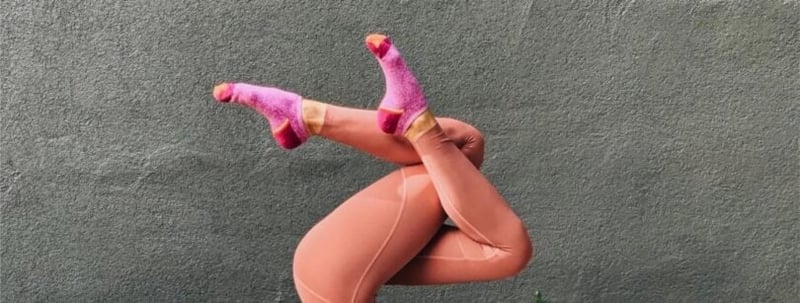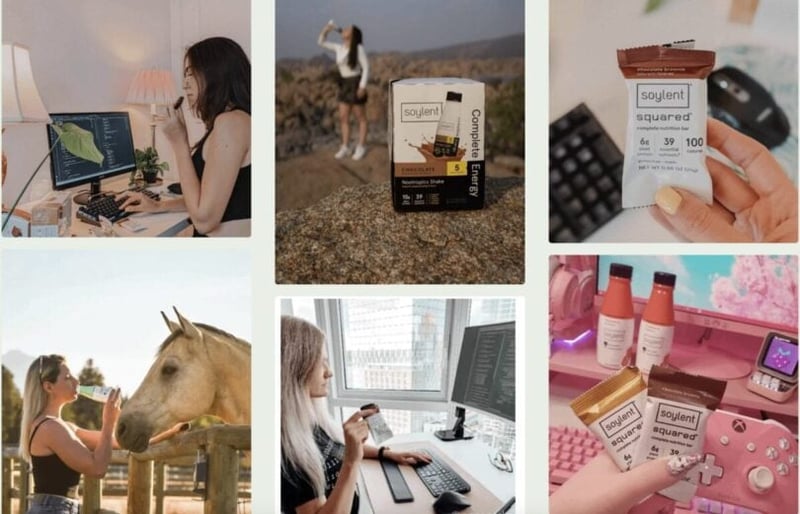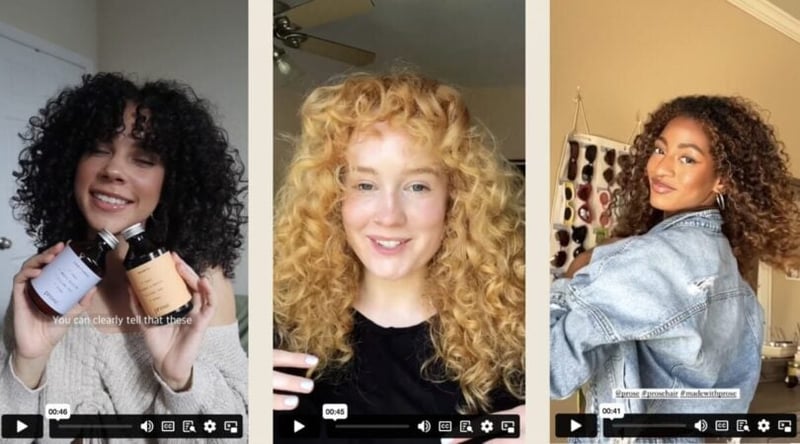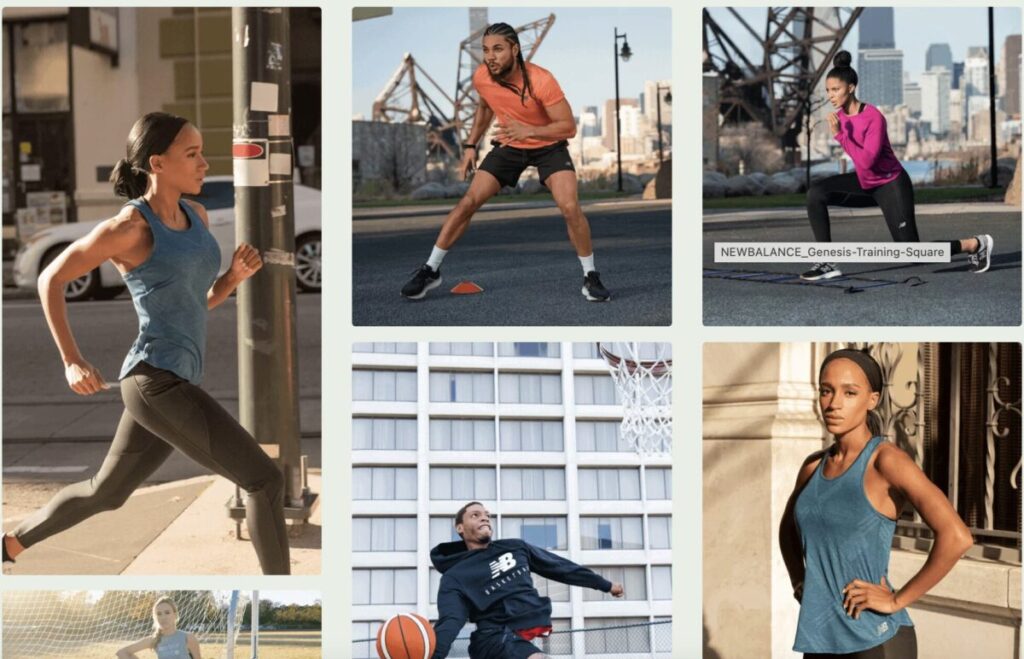With the rise of micro-influencer marketing, brands are increasingly turning to smaller, more niche influencers to drive meaningful engagements. Although micro-influencers don’t have as much reach as influencers with millions of followers, they deliver impact by speaking to a more targeted audience. As such, they can help you engage a highly relevant audience that finds value in your offering.
If you’re thinking of building your own micro-influencer marketing campaign, start by looking at what others are doing. Here are 11 brilliant examples of brands that work with micro-influencers to give you inspiration.
11 Brilliant Examples of Brands that Work with Micro-Influencers:
When Cuts Clothing, a premium men’s clothing brand, needed to raise brand awareness on TikTok, they recruited 15 micro-influencers as ambassadors. These ambassadors were selected based on their ability to reach the brand’s target audience of older males in the high-income range. Each influencer was tasked with creating 1-2 TikTok videos per month around a specific theme such as a new product or collection or a holiday. Some of the videos included a unique discount code for 15% off, allowing Cuts Clothing to track how each influencer generated revenue. The campaign saw engagement rates of over 10% across 20-30 pieces of content, along with a CPA lower than $120. St. Pierre Bakery, a leading French brioche brand, wanted to raise awareness about how people could easily find the brand’s bread products where they do their regular shopping. The brand launched two campaigns with a selection of 30 influencers – a combination of micro and macro-influencers in the cooking and food space. These influencers were tasked with creating recipes that incorporated St. Pierre’s products. The summer campaign highlighted the brand’s grilling products along with a giveaway strategy. It ended up reaching 1.7 million people and driving 25,000+ engagements. The holiday campaign focused on making desserts with the brand’s brioche products and reached more than 3.3 million people with a 3.2% engagement rate. Each influencer created high-quality content in their individual style, showcasing the info and benefits of the probiotic product. The influencers generated 45,000+ Instagram Story impressions and 75,000+ combined views on YouTube. While Casetify already had a solid TikTok presence, the brand wanted to stay ahead of the curve to keep up with the platform’s rapidly changing landscape. The brand launched a couple of influencer marketing campaigns, with the second one focusing on micro-influencers. These micro-influencers helped create engaging evergreen videos around themes such as drop tests, fall photo dump, and “what I ordered vs. what I got.” For this campaign, the brand was able to see a total of 65 micro-influencer content at a fraction of the cost. The next campaign focused on creative freedom with influencers who could get really creative with the brand’s products. With a total of 28 videos, they generated 4 million views at a CPM of $9.59. When GOLDTOE needed to promote the brand’s range of athletic socks, they created a female-focused campaign with 12 high-performing female athletes on Instagram. These hand-selected influencers came from three different categories – micro, macro, and celebrity – so that they could generate deep engagement across all these categories. Each influencer showcased the brand’s #MoreThanPretty functional socks alongside a personal story explaining how they’re more than what meets the eye. The influencers further reinforced the quality of GOLDTOE socks by sharing Instagram Stories where they performed their favorite workouts while wearing the socks. The campaign generated 33 million impressions and 1.4 million engagements at a CPE of $0.035. Honest Paws wanted to raise awareness about their revolutionary CBD products for dogs by having relevant influencers try them out. They sourced a total of 600 micro-influencers in the pet space and gifted them two free products of their choice in exchange for creating content. The campaign generated 900+ pieces of content during a 6-month period. These posts generated more than 400,000 engagements and reached more than 10 million people. Soylent wanted to drive brand awareness for their new meal replacement product lines while simultaneously powering their content strategy. The brand distributed their products based on specific influencer interests such as outdoors, hiking, gaming, and so on. With a careful selection of micro-influencers across a variety of verticals, the brand was able to garner 35+ pieces of reusable content assets. The campaign also generated more than 5 million impressions. Hers wanted to promote their acne and skincare products on TikTok. For this, they carefully selected Gen-Z influencers based in the U.S. with a particular focus on those who have been creating content about their hair or skincare journeys. The campaign involved a mix of hero influencers for massive reach and micro-influencers who could create great content. During a 30-day period, the hair campaign generated more than 1.4 million impressions at a CPM of $11.01 with an engagement rate of 4.48%. The skin campaign generated over 3.4 million impressions at a CPM of $5.13 and an engagement rate of 2.24%. Both campaigns resulted in 11k visitors to the Hers website at a 0.62 CPC. Moosejaw specializes in outdoor recreation gear and apparel. As an out-of-the-box brand, their influencer marketing campaign needed to emulate their uniqueness. This meant partnering with vibrant influencers with fun personalities and easy access to the great outdoors. They recruited more than 37 creators, mostly comprising micro-influencers, who had an interest in outdoor recreation. These 37 creators shared their #MoosejawMadness stories through eye-catching and sometimes humorous images and fun captions. The content was shared across leading social media platforms including Facebook, Pinterest, Twitter, and YouTube. That’s in addition to the 49 pieces of content on Instagram, where the campaign garnered an engagement rate of 2.89%. The value of micro-influencers isn’t just limited to B2C marketing. In fact, the social media giant, TikTok itself has leveraged content from micro-influencers to run a successful B2B campaign. In this case, the micro-influencers were in the form of small business creators on the app. The platform needed to educate small business owners on how to use TikTok to grow their business while also encouraging them to use TikTok Promote. So TikTok partnered with successful small businesses on the platform who shared their stories to help other business owners realize how TikTok can bolster their business. The content was then edited and shared by the TikTok Small Business page, generating a total of 2 million likes. The page even garnered 400,000+ followers over the course of this campaign. User-generated content is highly effective for creating relatable ads that resonate with the target audience. Realizing this, Prose, a clean beauty brand, wanted to leverage high-quality UGC to power their ad campaigns. At the same time, the content needed to be fresh so it didn’t bore the audience, which meant that the brand needed new content assets on a consistent basis. They adopted a scalable micro-influencer recruitment process that allowed them to generate high-performing assets for their ads on a weekly basis. The brand has since been able to generate 50 pieces of unique content assets each month. 1. Cuts Clothing
2. St. Pierre Bakery
3. ExeGi Pharma
4. Casetify
5. GOLDTOE

6. Honest Paws

7. Soylent

8. Hers
9. Moosejaw

10. TikTok

11. Prose

How Brands Seek Micro-Influencers
With micro-influencers having a more limited reach, brands need to be very strategic about the influencers they work with. They need to make sure that whichever influencers they select can help them reach the right people. This means narrowing down on influencers who have influence in specific niches and industries.
Based on the brand examples highlighted above, many brands look for micro-influencers based on their industry. For example, you could find pet nutrition brands partnering with influencers in the pet space while GOLDTOE focused on female athletes to help promote their athletic socks. This is the biggest criterion for maintaining relevance and ensuring that you’re working with influencers who can reach the right audience.
Additionally, the ability to reach the right demographic is another factor that many brands consider in their influencer search. Take the Cuts Clothing example, for instance, where the brand sought out influencers who could reach older men in the high-income range.
In some cases, location plays an important role when brands want to target people at specific locations. They want to be able to work with micro-influencers who have a particularly strong influence within a specific region. That’s why brands like New Balance developed geo-targeted micro-influencer campaigns to promote new in-store products in different cities.

Source: inbeat.agency
Another vital consideration is the influencer’s personality and content type. Brands typically want to partner with micro-influencers that match their own personality, which is why Moosejaw looked for influencers with fun personalities to align with their out-of-the-box persona.
In some cases, brands seek out micro-influencers who already genuinely love their products and recruit them into their brand ambassador programs. These influencers add authenticity to the partnership since they already have an established relationship with your brand and already love your products.
Putting all these into consideration can be challenging, especially if you have limited resources and expertise. So many brands turn to micro-influencer marketing agencies to take over their influencer search process. These agencies make use of sophisticated tools and expansive influencer networks to filter and vet the right creators for each brand.
If you have the expertise, however, you can also leverage a micro-influencer platform to conduct your search. These platforms make it easier to sieve through thousands of influencer profiles to find the right match for your campaign based on a number of filters. These filters may go beyond industry and niche and even let you narrow your search based on things like follower count and engagement rate.
If you’re opting for this, it’s important to look for a platform that has an expansive network of micro-influencers instead of settling for just any influencer search tool. This will give you more options to choose from, which improves your chances of finding the right micro-influencers to work with.
The Financial Aspect: How Brands Pay Small Influencers
When developing a micro-influencer campaign, another important consideration is how to pay them. This entirely depends on the type of campaign you’re running.
For instance, some of the above brand examples involved product seeding campaigns where micro-influencers receive free products in exchange for posting content. This is one of the most cost-effective options, especially considering the high return on investment. In fact, gifting products to micro-influencers can boost ROAS by a whopping 2,000%.
However, it’s important to take into consideration that many smaller influencers also expect monetary compensation instead of just free products. That’s why some brands also opt to recruit micro-influencers as brand affiliates, which will allow them to earn a commission based on their referrals.
This type of partnership involves the influencer sharing a code or affiliate link, using which you can track their performance. You then pay them a percentage or a fixed fee based on the number of sales they generate.
Alternatively, some micro-influencers may expect to be paid per post like larger influencers. Even if this is the case, they still charge a considerably lower rate compared to some of the mega influencers.
According to our latest influencer rates report, brands can expect to pay anywhere between $20 and $1,250 per micro-influencer post depending on the format and platform. Meanwhile, mid-tier influencers (which are just above micro-influencers) will charge a minimum of $100 per post and as much as $12,500.
Start Creating Successful Micro-Influencer Campaigns
Now that you have some brilliant brand examples to inspire you, it’s time to start with your own micro-influencer marketing campaign. You also have an idea of how you can conduct a search for micro-influencers and what types of payment you can expect to give. Based on these tips and ideas, you can develop a winning micro-influencer campaign for your brand.
Frequently Asked Questions
What brands partner with influencers?
Brands that want to expand their reach and build meaningful connections with their audience partner with influencers.
How do micro-influencers connect with brands?
Micro-influencers connect with brands through influencer marketplaces and influencer marketing agencies.
How do I find brands that work with influencers?
You can find brands that work with influencers by searching on influencer marketing marketplaces that list both brands and influencers.
How do you collab with micro influencers?
You can collab with micro-influencers by having them create content in exchange for free products, affiliate payments, or per-post payments.



